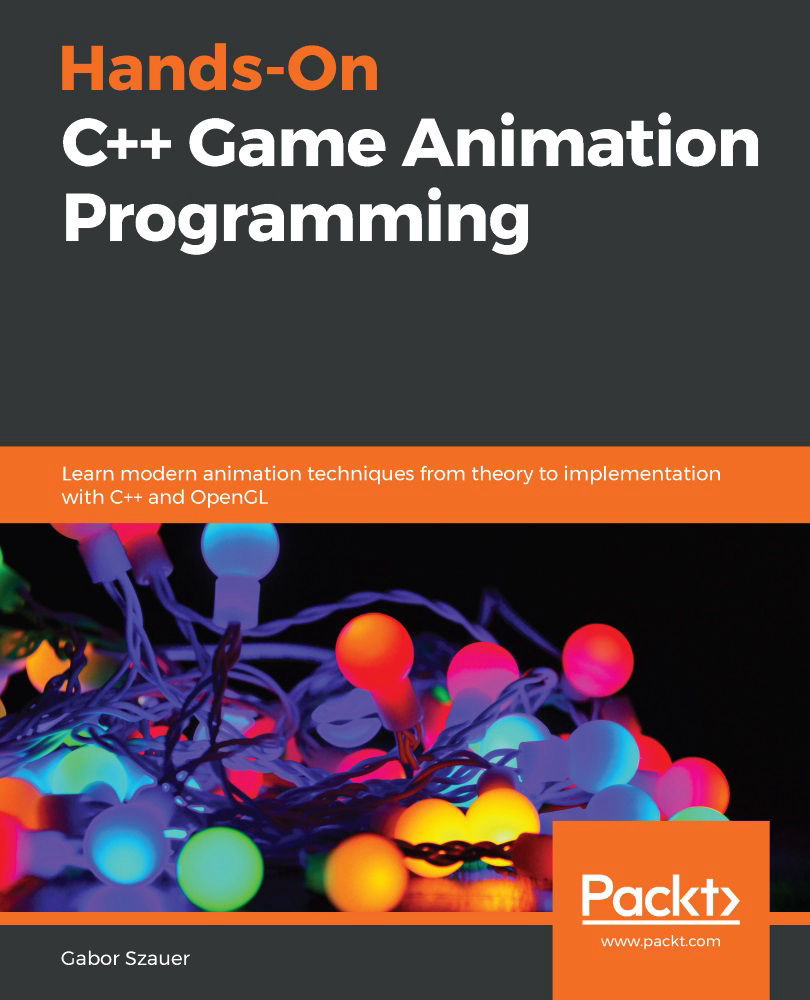Summary
In this chapter, you learned how to blend multiple animations. Blended animations can blend the whole hierarchy or just a subset. You also built a system to manage the fading between animations when a new animation plays. We also covered additive animations, which can be used to create a new motion when given the joint angles to interpolate between.
There are four samples included in the downloadable materials for this chapter. Sample00 is all the code up to this point in the book. Sample01 demonstrates how to use the Blend function by blending between a walk and a run animation on a timer. Sample02 demonstrates the use of the cross-fade controller by crossfading to random animations and Sample03 demonstrates how to use additive animation blending.
In the next chapter, you will learn about inverse kinematics. Inverse kinematics allows you to figure out how the limb of a character should be bent according to where its ends are. Think about pinning the foot of a character...







































































